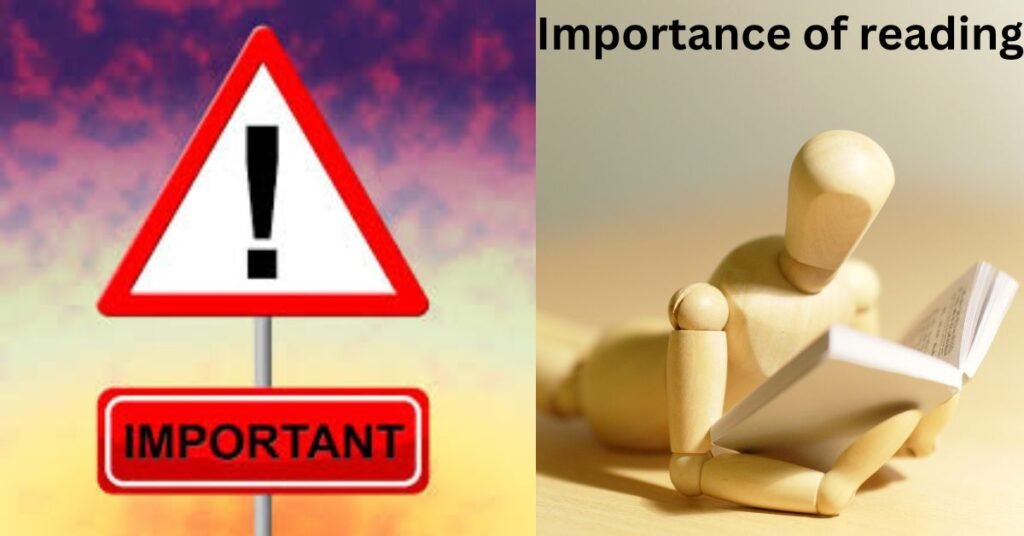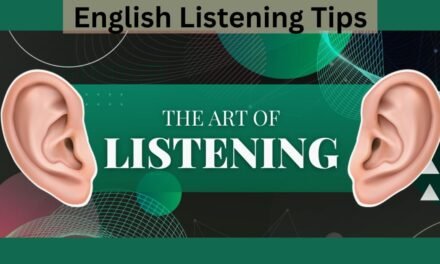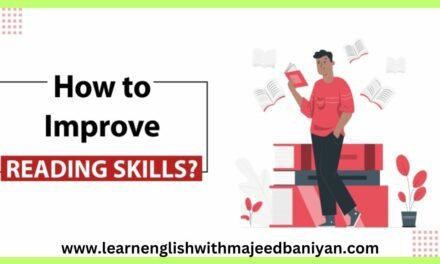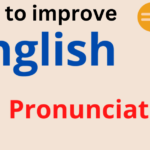English reading tips with problems and solutions
Do you ever find yourself staring at a page of text, but the words just don’t seem to sink in? Maybe you get lost in difficult vocabulary, or your mind wanders after just a few sentences. If you’re looking to improve your English reading tips with problems & solutions and enjoyment, you’re not alone. Many people struggle with various reading challenges.
But fear not! There are a wealth of strategies and solutions available to transform you into a confident and engaged reader. In this guide, we’ll explore some common problems people encounter while reading English, and provide practical tips to help you overcome them. With a little effort and the right approach, you can unlock the full potential of the written word.
Strengthening your English reading tips with problems & solutions can feel like a marathon, not a sprint. You might encounter roadblocks like unfamiliar vocabulary or a wandering mind. But don’t worry, fellow reader! This guide will provide practical solutions to these and other common problems. We’ll delve into effective reading tips to transform you into a more confident and engaged explorer of the written word.

Journey to English reading tips with problems and solutions
Reading English can be tricky! Big words or getting lost are common problems. This guide will help! We’ll show you easy tricks to understand English better and enjoy reading more. Get ready to be a reading champion!
What is reading?
Reading is a fascinating journey of transforming symbols on a page into a world of understanding and experience. It’s more than just recognizing letters and pronouncing words. Here’s a deeper look at what reading includes:
1. Decoding Symbols: Dive into the Brain’s Machinery
Mention the role of the visual cortex in processing shapes of letters and the angular gyrus which connects visual processing to language areas.
Briefly explain how phonics leverages our knowledge of sounds to decode new words.
Discuss the concept of sight words and how frequently encountered words become instantly recognizable.
2. Building Comprehension: A World of Connections
Expand on connecting by discussing how background knowledge (schema) influences understanding. Provide an example of how someone familiar with a topic might grasp a text faster.
Explore different types of inferences, like drawing conclusions based on cause-and-effect relationships or recognizing foreshadowing in a story.
Briefly touch upon the concept of metacognition – being aware of your reading process and using strategies to improve it (like rereading confusing parts).
3. Fluency and Pace: The Rhythm of Reading
Mention the importance of automaticity in reading fluency, where word recognition becomes effortless.
Discuss how fluency allows for better comprehension by freeing up the mental capacity to focus on meaning instead of decoding individual words.
Briefly explore concepts like prosody (reading with expression) and how it can enhance understanding and enjoyment.
4. Active Engagement: A Conversation with the Text
Provide examples of how readers can engage with the text. This could involve summarizing information, creating mental images, questioning the author’s point of view, or making connections to personal experiences.
Briefly discuss different reading strategies, like SQ3R (Survey, Question, Read, Recite, Review) that promote active engagement.
5. Beyond the Basics: A Lifelong Journey
Mention different types of reading, like skimming for main ideas, scanning for specific information, or close reading for in-depth analysis.
Briefly discuss how critical thinking skills developed through reading can be applied to various aspects of life.
End with a note on the power of reading to transport us to different worlds, broaden our perspectives, and foster a love for lifelong learning.
By incorporating these details, you can create an even more comprehensive picture of the fascinating world of reading. Remember, the key is to provide explanations that are still easy to understand while offering a deeper look into the cognitive processes involved.

Importance & advantage of reading like native speakers
Reading like a native speaker unlocks a whole new world of language. It’s not just about understanding the words on the page; it’s about experiencing the text the way the author intended, with all its nuances and subtleties. Here’s why achieving this fluency is so important and how you can work towards it:
Advantages of Reading Like a Native
Deeper Comprehension: Native-level reading allows you to grasp the full meaning of the text, including humor, sarcasm, and cultural references that might otherwise go unnoticed.
Enhanced Fluency: Reading effortlessly, without stumbling over unfamiliar words or sentence structures, allows for a more enjoyable and engaging experience.
Vocabulary Expansion: Exposure to a wider range of vocabulary in context helps you learn and retain new words naturally.
Improved Writing Skills: By absorbing the rhythm, flow, and style of native writing, your own writing becomes more nuanced and sophisticated.
Greater Confidence: Reading fluently boosts your confidence in using English for other purposes, like speaking or listening.
Who are native readers?
Native readers are like ninjas of their own language. They absorb it from a young age, often in their home environment, where it’s the language spoken by their family or the main one of their country. This early and constant exposure grants them a sixth sense for their native tongue. They can instinctively understand grammar, slang, pronunciation, and the natural flow of the language – it all feels effortless to them.
Can we be native readers?
Native speakers naturally have an advantage, the good news is that anyone can develop near-native reading skills in English with dedication and the right approach. The benefits are numerous! You’ll unlock the full meaning of the text, including hidden humor and cultural references. Reading will become smoother and more enjoyable. You’ll naturally pick up new vocabulary and improve your own writing by absorbing the flow and style of native writers. Most importantly, you’ll gain confidence in using English for various purposes, like speaking and listening.
Problems for why we cannot read like native readers
While the ability to read fluently in a second language opens doors to a world of knowledge and enjoyment, achieving native-like reading proficiency presents several hurdles. Here’s a closer look at these roadblocks:
Hesitation: Hesitation is a feeling of uncertainty or doubt that causes a pause or delay in speech, action, or decision-making. It’s like a little voice in your head saying “Wait a minute” before you move forward. Sometimes hesitation is caused by a lack of information, while other times it’s due to weighing different options or overcoming fear.
Limited Exposure: Unlike native speakers who are immersed in their language from a young age, learners of a second language often lack the same level of consistent exposure. This continuous bath in the language allows native readers to develop an unconscious understanding of its intricacies – the rhythm and flow of sentences, the subtle nuances of grammar, and the vast tapestry of vocabulary. Without this constant engagement, learners might struggle to internalize these elements, hindering their ability to read with the same natural fluency.
Dissecting the Mechanics: The initial stages of language acquisition often involve a heavy emphasis on grammar rules and the painstaking process of decoding individual words. While crucial for building a foundation, this focus on mechanics can become a double-edged sword. It can slow down reading speed significantly, making it difficult to grasp the overall meaning of a text. After all, native readers don’t have to consciously analyze each sentence structure or agonize over word pronunciation. These elements become second nature, allowing them to focus on the bigger picture – the essence of what the author is trying to convey.
Stress: Stress in English listening refers to how certain syllables in words and sentences are emphasized. It’s not just about volume, but also about pitch and length. Here’s how native speakers use stress:
- Word Stress: One syllable in most English words is stressed, meaning it’s pronounced louder, higher in pitch, and held slightly longer than the others. This stress helps distinguish between words. For instance, “present” (gift) and “preSENT” (past tense verb) have different stresses on the first syllable, completely changing the meaning.
- Sentence Stress: Not all words in a sentence carry equal weight. Native speakers stress certain words to convey the main idea or emphasize a particular point. Imagine saying “I DIDN’T take your pen” (emphasizing you weren’t the one who took it). Here, “DIDN’T” is stressed to show what you’re denying.
Vocabulary Gaps: Native readers have the advantage of a vast vocabulary accumulated over years of exposure. This wealth of words allows them to navigate even complex texts with ease. However, learners of a second language inevitably encounter vocabulary gaps. Unfamiliar words act like roadblocks, interrupting the flow of reading and hindering comprehension. Imagine trying to decipher a riveting adventure story while constantly stopping to consult a dictionary – the momentum and enjoyment would certainly be dampened.
Cultural Nuances: Language is intricately intertwined with culture. Native readers have an inherent understanding of cultural references, jokes, and allusions embedded within their language. These nuances can be easily missed by someone from a different cultural background. For example, a satirical reference to a historical event or a witty play on words specific to a certain region might fly right over their head. This can lead to a less rich and layered reading experience, as they miss out on the deeper meaning hidden within the text.
Confidence and the Cycle of Frustration: Struggling readers often grapple with a lack of confidence in their abilities. This can manifest in slower reading speeds and difficulty tackling complex texts. The resulting frustration can create a negative cycle, further hindering progress. However, with the right strategies and a focus on building fluency, this hurdle can be overcome. By celebrating small victories and gradually increasing the difficulty of reading materials, learners can build confidence and find joy in the process of language acquisition.

Solutions for how we read like native readers
The world of fluent reading, where words flow effortlessly and meaning unfolds like a captivating story, might seem like a superpower reserved for native speakers. But fear not, fellow reader! With dedication and the right approach, you too can develop near-native reading skills in English. Here are some powerful strategies to guide you on your journey:
1. Embrace the Power of Pleasure
Read What Makes Your Heart Sing: Dive into content that sparks your joy! Whether it’s captivating comics, websites brimming with fascinating facts, or hilarious stories that make you erupt in laughter, choose material that keeps you glued to the page. Remember, enjoyment fuels engagement, and the more you enjoy reading, the more you’ll naturally absorb the language.
2. Consistency is Key
Make Reading a Daily Habit: Just like building strong muscles, becoming a fluent reader requires consistent effort. Aim to carve out some reading time each day, even if it’s just for 15-20 minutes. These short bursts of practice will gradually build your reading stamina and speed.
3. Befriend New Words
Don’t Let Unfamiliar Words Discourage You: It’s perfectly normal to encounter words you don’t recognize at first. Embrace these moments as opportunities to expand your vocabulary! Sometimes, you can guess the meaning from the surrounding context or pictures. If you’re truly stumped, don’t hesitate to ask a friend or use a dictionary later.
4. Unleash Your Inner Voice
Read Aloud: Speaking the words aloud helps solidify the connection between written text and spoken language. It also provides valuable practice with pronunciation and sentence flow. Don’t be shy – experiment with different voices for different characters, and have some fun with it!
5. The Magic of Listening and Reading Together
Find Audiobooks of Your Favorite Reads: Imagine this, curling up with a good book while listening to its audiobook version simultaneously. This powerful technique allows you to connect the spoken word with the written form, significantly improving your comprehension and fluency. Choose a book you already enjoy and let the magic of listening and reading together work its wonders.
Remember, the journey to reading like a native is a marathon, not a sprint. Celebrate your progress, no matter how small, and enjoy the process of unlocking new worlds and enriching your understanding of the English language. With dedication and these effective strategies, you’ll be well on your way to becoming a reading champion!

Conclusion
Reading in English like a pro might seem tricky at first, but don’t worry! These tips are like secret weapons to help you become a reading rockstar. Just remember to read things you enjoy, practice a little each day, and don’t be scared of new words. With some effort, you’ll be zooming through books in no time!
Reading in English can be like a fun adventure! You might get stuck sometimes, but that’s okay. These tips are like helpful friends on your journey. Just keep reading things you like, practice a little each day, and don’t be afraid to ask for help with new words. Remember, with a little effort, you’ll be unlocking exciting stories and cool information in no time! Happy reading!
That’s all for our guide on conquering those common roadblocks and leveling up your English reading skills! Remember, becoming a reading pro takes time and practice, but with these tips and a love for reading, you’ll be well on your way. So grab your favorite book, dive in, and happy reading adventures!
Hope you liked the post “English reading tips with problems & solutions” If yes then leave a comment and give it a 5-star rating. I have also written posts on English-speaking tips with problems & solutions, English listening tips with problems & solutions, English-writing tips with problems & solutions. Hope you will like all these posts. Read and enjoy your life in English.










I am genuinely amazed by your deep insights and superb writing style. Your depth of knowledge is evident in every sentence. It’s obvious that you invest a great deal of effort into delving into your topics, and the results does not go unnoticed. Thank you for sharing this valuable knowledge. Keep on enlightening us!
I’m thoroughly captivated by your profound understanding and superb writing style. Your depth of knowledge clearly stands out in every piece you write. It’s obvious that you spend considerable time into researching your topics, and this effort pays off. Thanks for providing such detailed information. Keep up the great work!
I am genuinely amazed by the keen analysis and stellar ability to convey information. Your expertise shines through in every piece you write. It’s evident that you put a lot of effort into delving into your topics, and the results pays off. We appreciate your efforts in sharing such valuable insights. Keep up the great work!
I am genuinely amazed by the keen analysis and stellar way of expressing complex ideas. The knowledge you share clearly stands out in every sentence. It’s clear that you invest a great deal of effort into understanding your topics, and this effort does not go unnoticed. Thanks for providing this valuable knowledge. Keep up the great work!
I’m truly impressed by the deep insights and excellent ability to convey information. Your expertise clearly stands out in every sentence. It’s evident that you put a lot of effort into understanding your topics, and this effort pays off. Thank you for sharing this valuable knowledge. Keep up the great work!
I’m thoroughly captivated by the deep insights and excellent ability to convey information. Your depth of knowledge shines through in each paragraph. It’s evident that you spend considerable time into delving into your topics, and this effort is well-appreciated. Thanks for providing such detailed information. Keep up the great work!
I am genuinely amazed with your profound understanding and excellent ability to convey information. The knowledge you share clearly stands out in every piece you write. It’s evident that you invest a great deal of effort into understanding your topics, and the results pays off. Thank you for sharing such valuable insights. Keep up the great work!
I’m thoroughly captivated by your deep insights and superb way of expressing complex ideas. The knowledge you share clearly stands out in every piece you write. It’s clear that you put a lot of effort into delving into your topics, and that effort does not go unnoticed. We appreciate your efforts in sharing such valuable insights. Keep on enlightening us!
I’m truly impressed by the profound understanding and superb ability to convey information. Your expertise clearly stands out in every piece you write. It’s obvious that you invest a great deal of effort into delving into your topics, and that effort pays off. We appreciate your efforts in sharing such valuable insights. Continue the excellent job!
I’m thoroughly captivated with your deep insights and superb ability to convey information. Your depth of knowledge clearly stands out in each paragraph. It’s evident that you spend considerable time into delving into your topics, and that effort pays off. We appreciate your efforts in sharing this valuable knowledge. Keep on enlightening us
I’m truly impressed with your keen analysis and stellar way of expressing complex ideas. Your expertise shines through in every piece you write. It’s obvious that you invest a great deal of effort into researching your topics, and this effort pays off. Thank you for sharing such detailed information. Continue the excellent job!
I appreciate, cause I found exactly what I was looking for. You’ve ended my four day long hunt! God Bless you man. Have a nice day. Bye
Just a smiling visitor here to share the love (:, btw great layout. “He profits most who serves best.” by Arthur F. Sheldon.
Hmm it appears like your site ate my first comment (it was extremely long) so I guess I’ll just sum it up what I submitted and say, I’m thoroughly enjoying your blog. I as well am an aspiring blog blogger but I’m still new to everything. Do you have any recommendations for inexperienced blog writers? I’d definitely appreciate it.
Howdy very nice website!! Man .. Beautiful .. Superb .. I will bookmark your site and take the feeds also…I’m satisfied to find numerous useful information right here within the put up, we need develop extra strategies in this regard, thank you for sharing.
Wohh just what I was searching for, thanks for putting up.
I like this weblog so much, saved to bookmarks. “American soldiers must be turned into lambs and eating them is tolerated.” by Muammar Qaddafi.